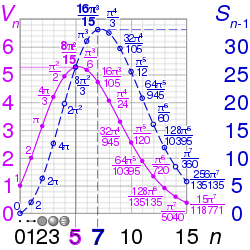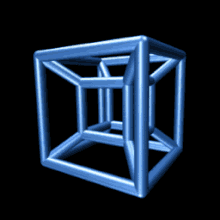Hypersphere
In geometry of higher dimensions, a hypersphere is the set of points at a constant distance from a given point called its centre. It is a manifold of codimension one—that is, with one dimension less than that of the ambient space.

As the hypersphere's radius increases, its curvature decreases. In the limit, a hypersphere approaches the zero curvature of a hyperplane. Hyperplanes and hyperspheres are examples of hypersurfaces.
The term hypersphere was introduced by Duncan Sommerville in his 1914 discussion of models for non-Euclidean geometry.[1] The first one mentioned is a 3-sphere in four dimensions.
Some spheres are not hyperspheres: If S is a sphere in Em where m < n, and the space has n dimensions, then S is not a hypersphere. Similarly, any n-sphere in a proper flat is not a hypersphere. For example, a circle is not a hypersphere in three-dimensional space, but it is a hypersphere in the plane.
References
- Duncan Sommerville (1914) Elements of Non-Euclidean Geometry, page 193 via Internet Archive
Further reading
- Kazuyuki Enomoto (2013) Review of an article in International Electronic Journal of Geometry.MR3125833
- Jemal Guven (2013) "Confining spheres in hyperspheres", Journal of Physics A 46:135201, doi:10.1088/1751-8113/46/13/135201
